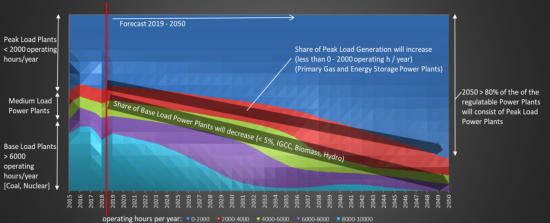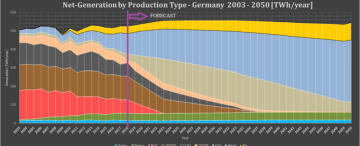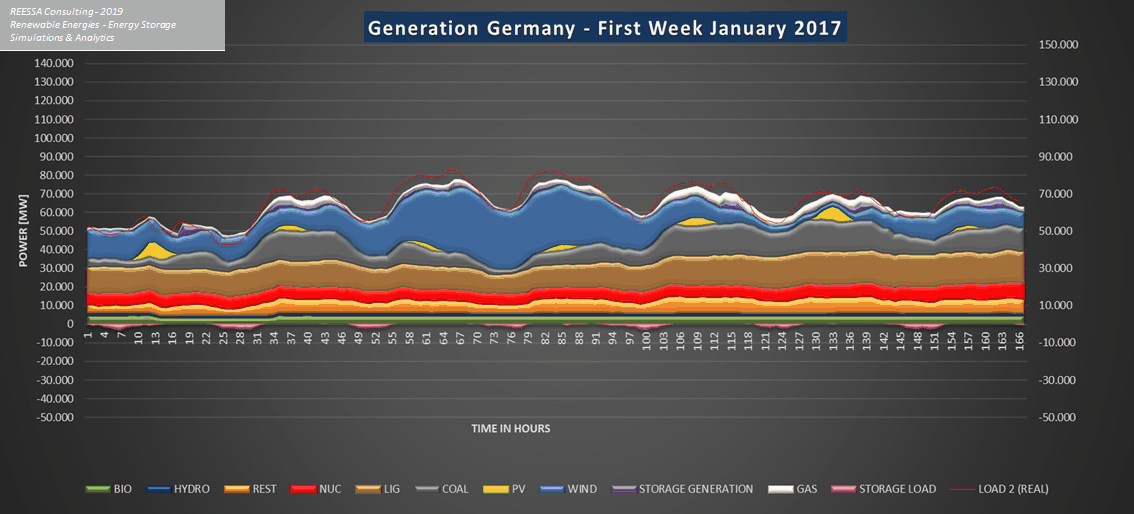




© REESSA Consulting UG (haftungsbeschränkt) 2019
IMPRINT
Market Analyses
Market Analyses for Energy Storage systems
Since the introduction of the German Renewable Energy Sources Act (EEG) in 2000, the power plant landscape in Germany has already changed considerably. There has been an enormous increase in wind power and photovoltaic plants. An oversupply of power plant services increasingly led to the uneconomical operation of peak load power plants, which also included pumped storage power plants. The installed capacity of base load power plants declined continuously. This process has not yet been completed. The biggest changes still lie ahead.
Renewables Energies
Energy Storage
Simulations & Analytics



Range of Services
• Energy Storage Forecast Models (Prices and Spread) • Forecasts on Power Plant Composition • Cost-effectiveness Models for Storage Systems • Market Simulations (2020 - 2050) • Operating Simulations (2020 - 2050) • Determination of Demand for Peak Load Power Plants • Determination of Demand for Baseload Power Plants • Determination of Short-Term Storage Requirements • Determination of Long-Term Storage Demand Price Spread Analyses The electricity price spread is influenced by several factors and is the most important economic indicator for electricity storage facilities. With a share of renewable energies of more than 50% in the overall system, however, the influence of renewable energy generation becomes dominant. Here, the generation composition (wind / PV / biomass) plays a decisive role. For Central Europe, a significant increase in the electricity price spread is expected in the next decade. REESSA Consulting prepares price spread forecast models for meaningful feasibility studies and for the evaluation of energy storage facilities. Storage and Peak Load Power Plants Classic base-load power plants with high capacity utilization will be replaced by flexible gas-fired and storage power plants in the future. In an initial phase, storage facilities will serve to optimize the system by means of short-term storage and limiting fossil peak load power plants. In a second phase, long-term storage facilities will then also be able to replace fossil gas-fired power plants (goal of 100% full supply from renewable energies).
Forecast model - Production in Germany (one week January)
The
pace
of
change
on
the
German
power
plant
market
will
accelerate
in
the
coming
years.
By
2023,
the
remaining
10
GW
of
the
installed
base
load
from
nuclear
power
plants
will
be
completely
removed
from
the
grid.
At
the
same
time,
according
to
the
plans
of
the
so-called
Coal
Commission,
up
to
15
GW
of
additional
lignite
and
hard
coal
capacity
is
to
be
shut
down.
These
changes
will
once
again
have
a
major
impact
on
the
market.
Peak-load
power
plants,
which
also
include
storage
facilities,
will
again
experience
stronger
demand.
Gas-fired
power
plants,
in
particular,
must
increasingly
provide
the
base
and
medium
loads
in
addition
to
their
function
as
peak-load
power
plants.
In
addition,
the
planned
expansion
of
renewable
energies
must
be
further
integrated
into
this
system.
The
technical
and
economic challenges are enormous.
REESSA
Consulting
offers
detailed
market
analyses
and
forecast
models
to
evaluate
complex
market
developments
from
an
economic
and
technical
perspective.
Here,
too,
our
focus
is
on
energy
storage
technologies,
which
have
to
take on important tasks during the conversion of the energy system.

Preis-Spread Prognosis

By 2023, all nuclear power plants in Germany will be decommissioned.
By 2038, lignite and hard coal units are to follow.
Gas and storage power plants will be the most important controllable
power plant outputs.
The amount of backup power required to secure base-load demand will decrease only slightly.
However, the majority of controllable power plants will have ever lower full load hours.






ENERGY STORAGE
MARKET ANALYSES

